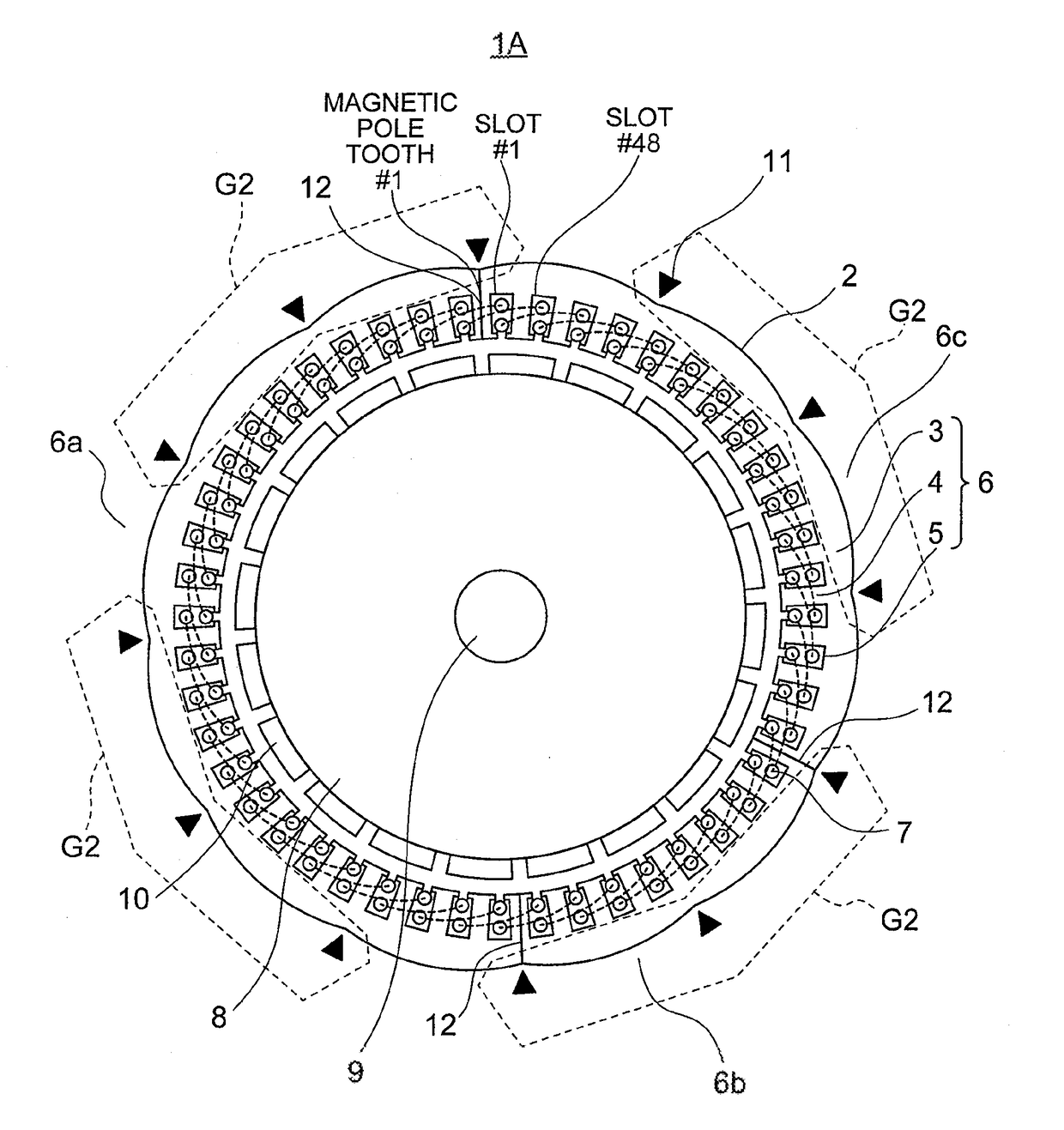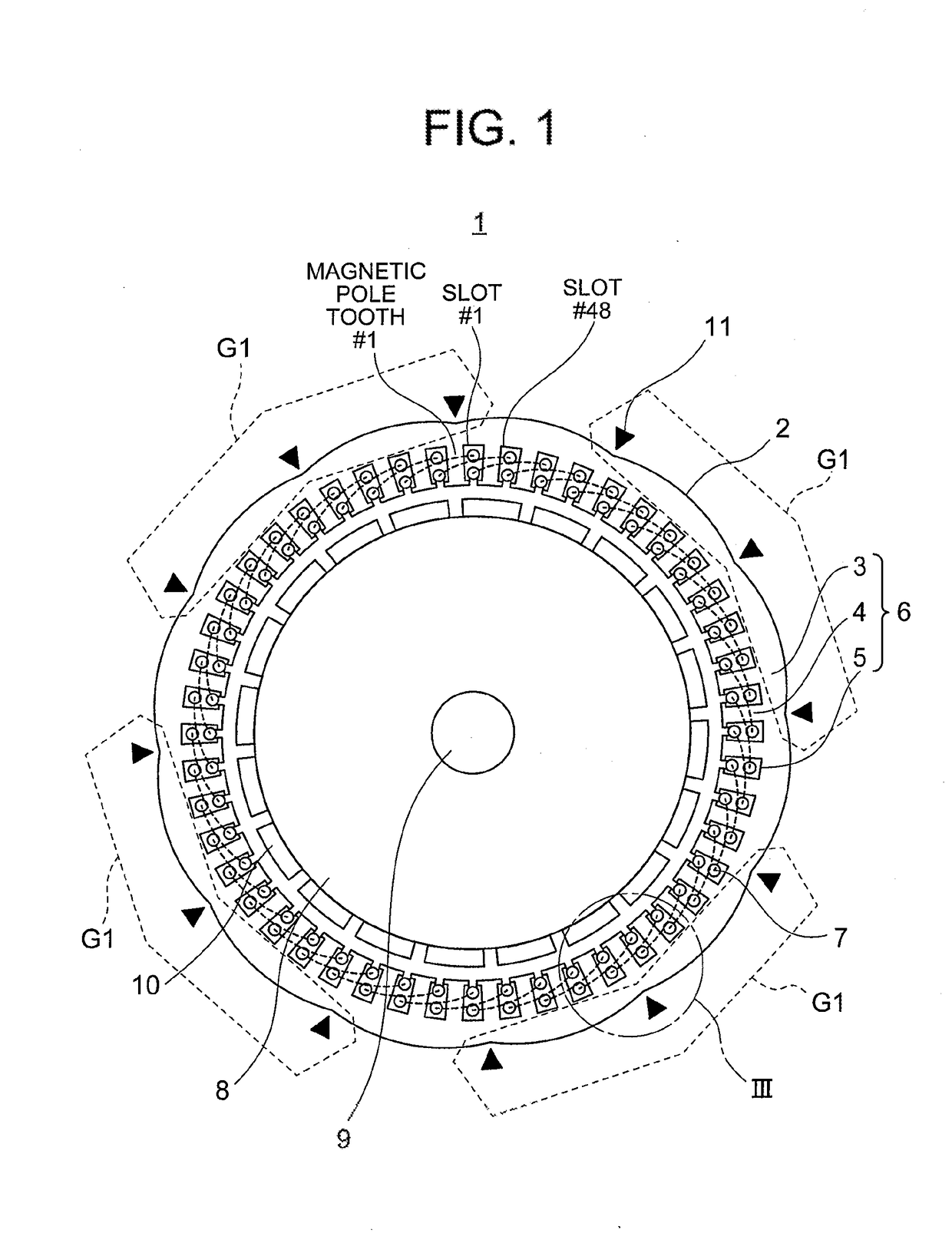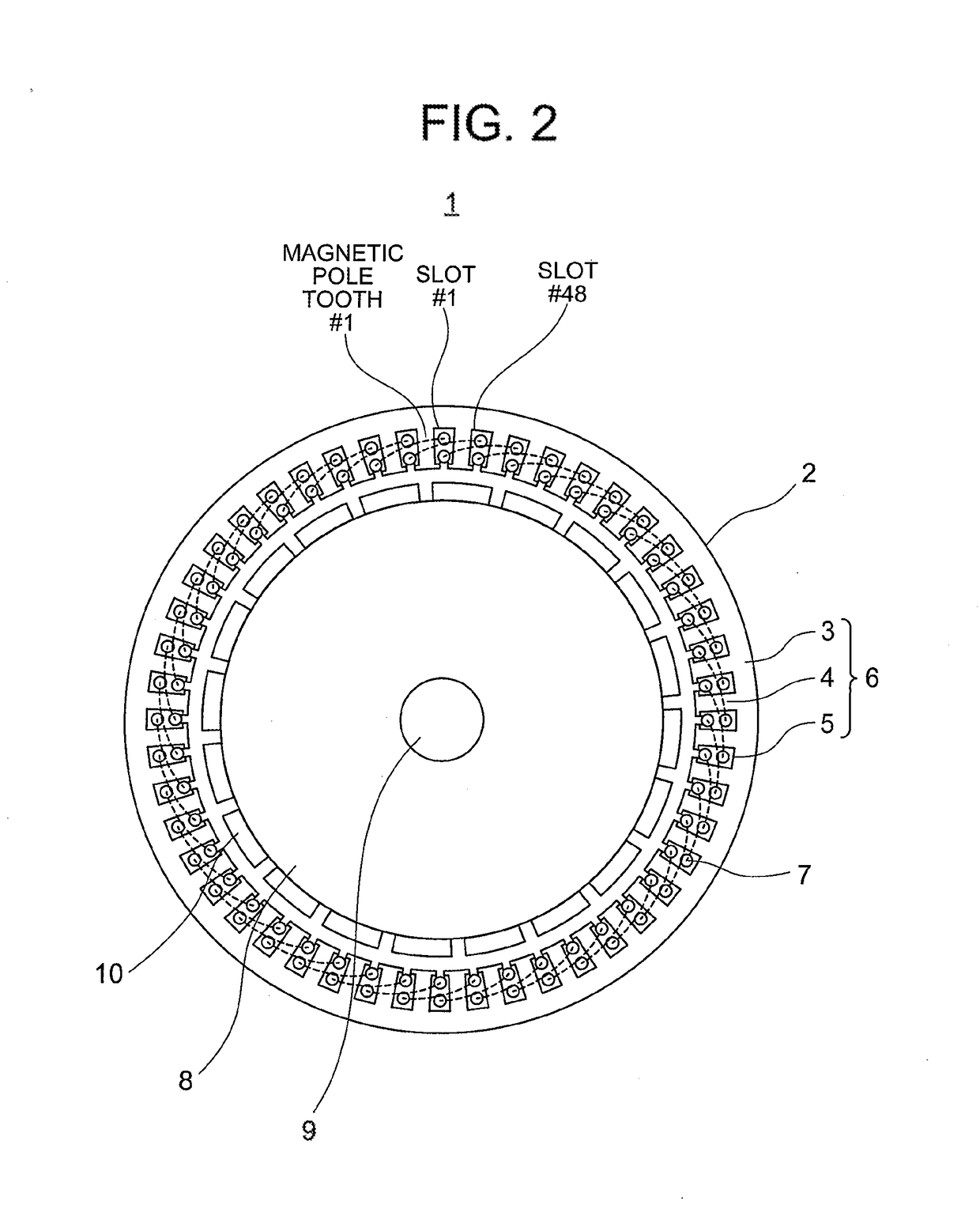Rotary electrical machine
- Summary
- Abstract
- Description
- Claims
- Application Information
AI Technical Summary
Benefits of technology
Problems solved by technology
Method used
Image
Examples
embodiment 1
[0044
[0045]FIG. 1 is a plan-view diagram illustrating a rotary electrical machine 1 of Embodiment 1 of the present invention. FIG. 2 is a plan-view diagram illustrating the rotary electrical machine 1 of FIG. 1 without depicting the connection positions 11 or distortion of an armature core 6 caused by welding. FIG. 3 is an enlarged perspective-view diagram illustrating portion III of FIG. 1.
[0046]In the present Embodiment 1 an instance is illustrated wherein the number of slots 5 of an armature 2 (hereafter referred to as number of slots Q) is 48 and the number of magnets 10 of a rotor 8 (hereafter referred to as number of magnetic poles P) is 20. In FIG. 1 and FIG. 2 dotted lines represent the coil end portions at which coil sides of coils 7 disposed in respective slots 5 are linked to each other. In FIG. 3 the coils 7 of FIG. 1 have been omitted.
[0047]The rotary electrical machine 1 is provided with the armature 2 and the rotor 8. The armature 2 has the armature core 6 having an a...
case 1
[0066
[0067]Case Where P / gcd(Q, P)=6a+1
[0068]In this case, the electrical angles of the three magnetic pole teeth #[x+Q / {gcd(Q, P)×m}×b] are 0°, 60° (240°) and 120°, respectively. Numerical values in brackets (i.e. 240°) represent electrical angles for coils 7 disposed in reverse winding.
case 2
[0069
[0070]Case Where P / gcd(Q, P)=6a+2
[0071]In this case, the electrical angles of the three magnetic pole teeth #[x+Q / {gcd(Q, P)×m}×b] are 0°, 120°, 240°, respectively.
PUM
 Login to View More
Login to View More Abstract
Description
Claims
Application Information
 Login to View More
Login to View More - R&D
- Intellectual Property
- Life Sciences
- Materials
- Tech Scout
- Unparalleled Data Quality
- Higher Quality Content
- 60% Fewer Hallucinations
Browse by: Latest US Patents, China's latest patents, Technical Efficacy Thesaurus, Application Domain, Technology Topic, Popular Technical Reports.
© 2025 PatSnap. All rights reserved.Legal|Privacy policy|Modern Slavery Act Transparency Statement|Sitemap|About US| Contact US: help@patsnap.com



